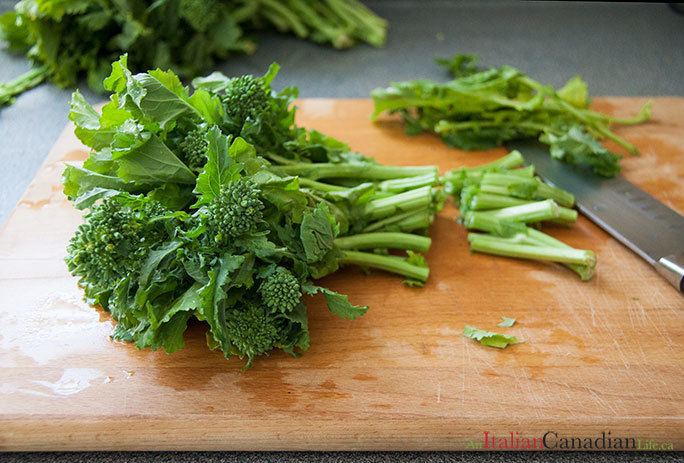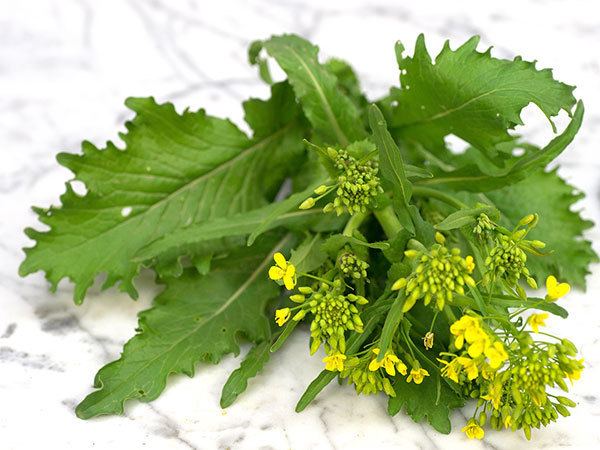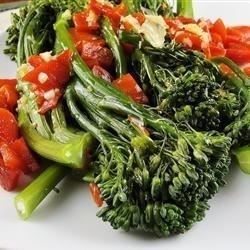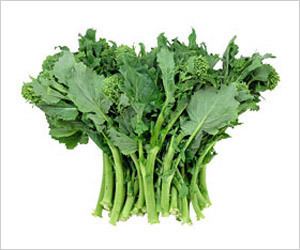Cultivar group Ruvo group | ||
 | ||
Similar Orecchiette, Broccoli, Endive, Turnip, Marrow‑stem Kale | ||
Broccoli rabe rapini raab how to prepare cook and use it in a recipe video recipes
Rapini (commonly marketed in the United States as broccoli raab or broccoli rabe /rɑːb/) is a green cruciferous vegetable. The edible parts are the leaves, buds, and stems. The buds somewhat resemble broccoli, but do not form a large head. Rapini is known for its slightly bitter taste and is particularly associated with Italian, Galician, and Portuguese cuisines. Within the Italian tradition, the plant is associated especially with southern Italian cuisines such as those of Ciociaria, Rome, Naples, Campania, and Apulia.
Contents
- Broccoli rabe rapini raab how to prepare cook and use it in a recipe video recipes
- Rapini vegetable health benefits
- Classification
- Description
- Culinary arts
- References

In Italy, broccoli rabe is known by different names: in Naples it is known as friarielli; in Rome broccoletti; in Puglia, cime di rapa (literally meaning "turnip tops"). It is also known as i broccoli friarelli and sometimes broccoli di rape, rapi, or rapini. In Portugal and Spain they are called grelos.

Rapini vegetable health benefits
Classification

The plant is a member of the tribe Brassiceae of the Brassicaceae (mustard family). Rapini is classified scientifically as Brassica rapa subspecies rapa, in the same subspecies as the turnip, but has also been treated as Brassica rapa ruvo, Brassica rapa rapifera, Brassica ruvo, and Brassica campestris ruvo.
Description
The young leaves of these plants as used in cooking are either the same as or the South European equivalent of turnip tops or turnip greens.
Rapini has many spiked leaves that surround clusters of green buds that resemble small heads of broccoli. Small, edible yellow flowers may be blooming among the buds. The flavor of rapini has been described as nutty, bitter, and pungent. The flavour is also reminiscent of mustard greens. Rapini is a source of vitamins A, C, and K, as well as potassium, calcium, and iron.
The cultivated vegetable probably descends from a wild herb related to the turnip that grew either in China or the Mediterranean region. Rapini is similar in shape to the Chinese Brassica oleracea cultivar called kai-lan. Rapini is now grown throughout the world. Rapini is available all year long, but its peak season is fall to spring.
Culinary arts
In Europe, it is widely used in southern Italian cuisine (in particular Basilicata, Apulia, Campania, and Sicily), in Roman cuisine and in northern Portuguese cuisine and in that of Galicia in Spain.
In southern Lazio, Frosinone, Ciociaria, it is usually sauteed with garlic and chili pepper, and served with sausages and fresh baked bread so as to make a sandwich. In the Central Italy regions, rapini sautéed with garlic, chili pepper and guanciale can be a side dish for porchetta, grilled pork ribs, sausages and other pork dishes. In Apulia, its most famous use is in "orecchiette e cime di rapa".
It is best blanched in salted boiling water before sautéeing in olive oil with garlic and chili pepper.
